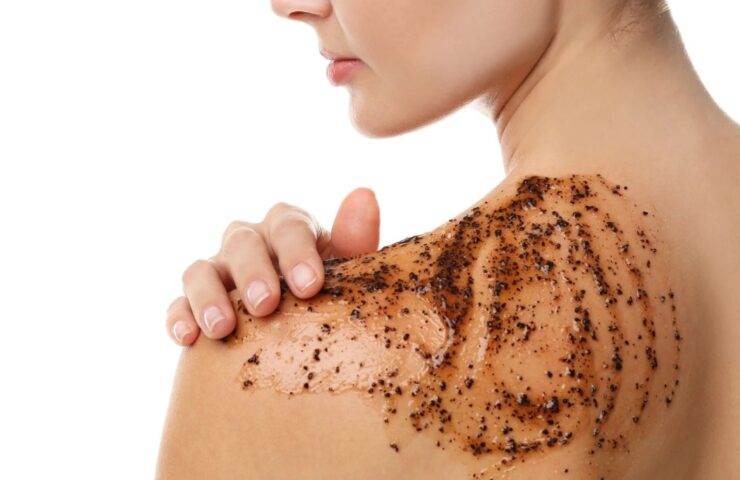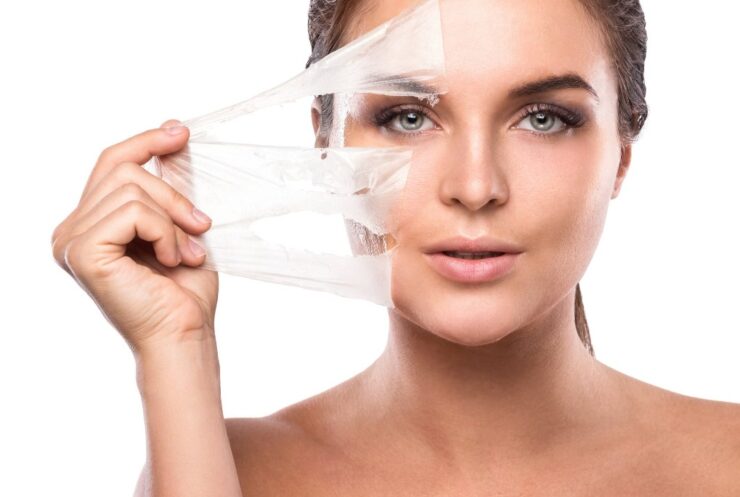
Proper skincare is crucial for managing dry skin, which can be uncomfortable and lead to more severe skin issues if not treated correctly.
Understanding the causes, symptoms, and appropriate treatments is essential for maintaining healthy, hydrated skin.
Signs and Symptoms of Dry Skin
Dry skin manifests in several ways, including dehydration, flaking, bumps, redness, and acne.
Dehydration leaves the skin feeling tight and less elastic, often accompanied by a dull appearance.
Flaking is another common symptom, where the skin may peel or shed. Bumps can appear, particularly on the back of the arms, giving a rough texture.
Redness often accompanies dry skin, as it becomes more susceptible to irritation.
Interestingly, acne can also be a symptom, as dry skin can lead to an overproduction of sebum, clogging pores and causing breakouts.
Recognizing these signs is the first step toward addressing dry skin effectively. Each symptom requires specific care and attention to restore the moisture balance and overall health.
Step 1 ─ Gentle Cleansing
Cleansing is the foundation of any skincare routine, particularly for dry skin. Choosing the right cleanser is paramount.
Opt for hydrating cleansers that are free from harsh chemicals and sulfates, which can strip the skin of its natural oils.
Recommended options include ZO® Skin Health Hydrating Cleanser and Epionce Milky Lotion Cleanser.
To wash your face with a hydrating cleanser, start by washing your hands with warm water to avoid transferring dirt and bacteria to your face.
Dampen your face with lukewarm water, which helps open up pores without stripping the moisture.
Apply a small amount of cleanser and massage it gently into your skin using circular motions, focusing on areas that tend to be drier.
Rinse thoroughly with lukewarm water, ensuring no residue is left behind.
Pat your face dry with a soft towel; avoid rubbing, which can irritate the skin further.
Finish by applying a moisturizer to lock in hydration, and don’t forget to use sunscreen to protect it from UV damage.
Step 2 ─ Exfoliation

Exfoliation is essential for removing dead cells and promoting cell turnover, but it must be done gently to avoid irritation.
Proper exfoliation helps maintain a smooth and healthy complexion, ensuring the outer layer remains receptive to hydration and other treatments.
Over-exfoliation can exacerbate dryness and lead to further issues, so it’s important to exfoliate no more than once or twice a week using mild exfoliants.
This frequency allows enough time for new cells to regenerate without stripping away essential oils or causing excessive dryness.
Examples of suitable exfoliants for those with dryness concerns include enzyme-based exfoliators or products with fine, non-abrasive particles. Enzyme exfoliators work by breaking down dead cells without the need for physical scrubbing, making them gentle yet effective.
Products with fine, non-abrasive particles can also be beneficial, as they help to slough away dead cells without causing micro-tears or irritation.
Chemical exfoliants, like those containing lactic acid, are another effective option. These exfoliants gently dissolve dead cells and promote hydration by encouraging cell turnover and helping maintain moisture levels.
When exfoliating, start with clean, damp skin. Apply the exfoliant in gentle, circular motions, avoiding any vigorous scrubbing that could lead to irritation. Focus on areas that feel particularly rough or flaky, as these spots can benefit the most from exfoliation.
After exfoliating, rinse thoroughly with lukewarm water to remove all traces of the product. Follow up with a hydrating moisturizer to replenish any moisture lost during the process and to lock in hydration.
Regular, gentle exfoliation can help maintain a smooth and receptive complexion, making it easier for hydrating products to penetrate and provide their full benefits.
Step 3 ─ Hydration

Hydration is the cornerstone of managing dry skin. Using a hydrating moisturizer is vital to replenish and maintain the skin’s moisture barrier.
Look for moisturizers that contain key ingredients like hyaluronic acid, glycerin, and ceramides. These ingredients attract and lock in moisture, helping to keep it plump and hydrated.
Recommended moisturizers and serums include Epionce’s Renewal Facial Cream, Epionce’s Intensive Nourishing Cream, and ZO Skin Health’s Growth Factor Serum.
These products are formulated to provide deep hydration and support the natural barrier.
When applying moisturizer, it’s best to do so immediately after cleansing and while the skin is still slightly damp. It helps to lock in the moisture from the cleanser. Use gentle, upward strokes to apply the moisturizer, ensuring even coverage.
For added hydration, consider layering a serum under your moisturizer. Pay special attention to particularly dry areas, and don’t forget to include your neck and décolletage in your routine. Regular hydration can significantly improve the appearance and feel of dry skin, making it softer and more supple.
Step 4 ─ Professional Treatments

In addition to daily skincare, professional treatments can provide significant benefits for dry skin.
Treatments such as HydraFacial™ and microneedling offer deep hydration and can help improve skin texture and tone. HydraFacial™ is a non-invasive treatment that cleanses, exfoliates, and hydrates the skin, leaving it refreshed and glowing.
Microneedling, on the other hand, uses tiny needles to stimulate collagen production and enhance the skin’s ability to absorb moisturizers and serums.
Consulting with a skincare specialist can help determine the most effective treatments for your type. They can tailor treatments to address specific concerns, ensuring optimal results.
Regular professional treatments can complement your daily skincare routine, providing an extra boost of hydration and addressing underlying issues that daily care may not fully resolve.
Professional treatments can be a valuable addition to your skincare regimen, helping to maintain hydration and improve overall skin health. By incorporating these treatments, you can achieve a more radiant and resilient complexion.
Step 5 ─ Sun Protection

Sun protection is crucial for all skin types, but especially for dry skin, which can be more susceptible to damage. Using sunscreen year-round helps protect it from harmful UV rays that can exacerbate dryness and lead to premature aging. Choose a broad-spectrum sunscreen with an SPF of at least 30 to ensure adequate protection.
When applying sunscreen, make sure to cover all exposed areas, including the face, neck, and hands. Reapply every two hours when outdoors, and more frequently if swimming or sweating.
Sunscreen should be applied as the final step in your skincare routine, after moisturizer. By making sun protection a daily habit, you can help prevent further dryness and maintain healthier skin.
The Bottom Line
Establishing a consistent skincare routine is key to managing dry skin.
By following these steps, you can keep your skin hydrated and healthy.
Don’t hesitate to seek advice from skincare professionals for personalized treatments and recommendations.







